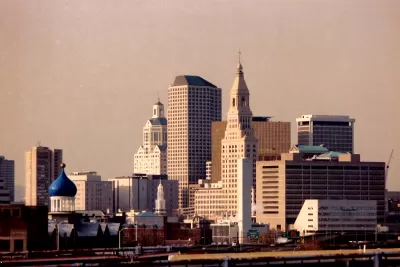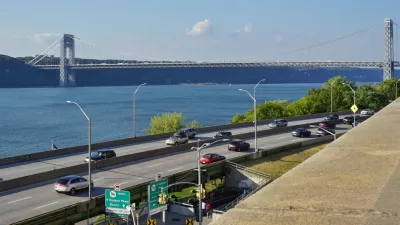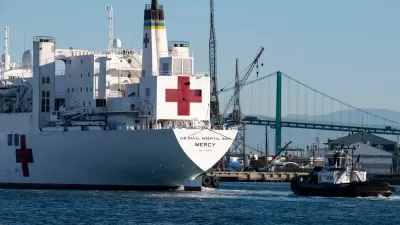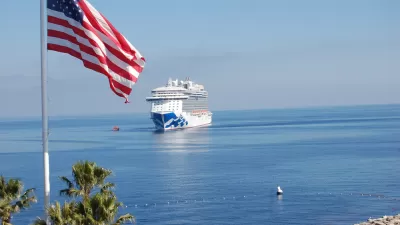As the virus surges throughout the South and West and heads north into the Midwest, the Northeast is the one region that has weathered the current phase of the pandemic the best. As of July 21, only one state in the U.S. is on track to contain COVID.

Covid Act Now, "a multidisciplinary team of technologists, epidemiologists, health experts, and public policy leaders working to provide disease intelligence and data analysis on COVID in the U.S.," according to its website, rates each state using four health metrics:
- Infection rate: Are active cases decreasing?
- Positive test rate: Is there widespread testing?
- Hospital capacity: Is there ICU headroom "to handle a new wave of COVID?"
- Contacts traced: Is there sufficient tracing to help contain COVID?
New Jersey was on track
"Gov. Phil Murphy [D-N.J.] is once again pointing to a research team's findings to salute something that's rarely determined in the United States: New Jersey is one of only three states on track to contain the coronavirus," reported Tom Davis for Patch on July 12 (source article).
Murphy, during his most recent news conference, pointed to the findings of researchers and epidemiologists from the group Covid Act Now which has determined that only three states — New Jersey, Vermont and New Hampshire — are on track to contain the coronavirus.
That was then. The "now" in Covid Act Now is just that—this is a dynamic website. As of July 21, all three states are off the coveted "on track to containment" list due to not scoring the optimum rating in any of the four metrics. New Jersey, with an infection rate of 0.90, scores "medium" rather than "low," in this category.
On average, each person in New Jersey with COVID is infecting 0.90 other people. Because this number is around 1.0, it means that COVID continues to spread, but in a slow and controlled fashion.
In addition, with a score of 65%, it is rated "medium" as opposed to "high" in the contact tracing metric.
Per best available data, New Jersey has 800 contact tracers. With an average of 245 new daily cases, we estimate New Jersey needs 1,225 contact tracing staff to trace all new cases in 48 hours, before too many other people are infected. This means that New Jersey is likely able to trace 65% of new COVID infections in 48 hours. At these lower levels of tracing, it is unlikely New Jersey will be able to successfully identify and isolate sources of disease spread fast enough to prevent new outbreaks.
Vermont: Infection rate is 0.91
New Hampshire: Infection rate is 1.03
And the "on tract to containment" winner is Connecticut, with an infection rate of 0.81:
On average, each person in Connecticut with COVID is infecting 0.81 other people. Because each person is infecting less than one other person, the total number of current cases in Connecticut is shrinking.
As for the other three metrics, the Constitution State scores "low," "low," and "high":
- Positive test rate: 0.8%
- ICU headroom used: 7%
- Contacts traced: 100%
Mortality
Connecticut, along with New York, New Jersey, and Massachusetts, were the four hardest hit states early in the pandemic, and, depending what unfolds in the future of the pandemic, may continue to have the total highest death rates since the first official coronavirus death was recorded on Feb. 29, 2020. According to Worldometer, rates are per 1 million people as of July 22:
- New Jersey: 1,780
- New York: 1,676
- Connecticut: 1,236
- Massachusetts: 1,226
- USA, total: 438
- Arizona: 401
- Florida: 242
- Texas: 148
On a final note, on Tuesday, Connecticut Gov. Ned Lamont, along with the governors of early partners New Jersey and New York, added 10 states to the travel advisory that requires travelers originating or returning "from a state that has a new daily positive test rate higher than 10 per 100,000 residents or a state with a 10% or higher positivity rate over a 7-day rolling average" to quarantine for 14 days, making for a total of 31 states, as reported by Emily Brindley for the Hartford Courant.
31 states in order to reduce transmissions brought in from throughout the country where the infection rate is increasing rapidly.
Related in Planetizen:
-
Pandemic Reversal: The New Tri-State Quarantine, June 25, 2020
FULL STORY: Gov. Murphy: NJ Back 'On Track' To Contain Coronavirus

Study: Maui’s Plan to Convert Vacation Rentals to Long-Term Housing Could Cause Nearly $1 Billion Economic Loss
The plan would reduce visitor accommodation by 25,% resulting in 1,900 jobs lost.

North Texas Transit Leaders Tout Benefits of TOD for Growing Region
At a summit focused on transit-oriented development, policymakers discussed how North Texas’ expanded light rail system can serve as a tool for economic growth.

Why Should We Subsidize Public Transportation?
Many public transit agencies face financial stress due to rising costs, declining fare revenue, and declining subsidies. Transit advocates must provide a strong business case for increasing public transit funding.

How to Make US Trains Faster
Changes to boarding platforms and a switch to electric trains could improve U.S. passenger rail service without the added cost of high-speed rail.

Columbia’s Revitalized ‘Loop’ Is a Hub for Local Entrepreneurs
A focus on small businesses is helping a commercial corridor in Columbia, Missouri thrive.

Invasive Insect Threatens Minnesota’s Ash Forests
The Emerald Ash Borer is a rapidly spreading invasive pest threatening Minnesota’s ash trees, and homeowners are encouraged to plant diverse replacement species, avoid moving ash firewood, and monitor for signs of infestation.
Urban Design for Planners 1: Software Tools
This six-course series explores essential urban design concepts using open source software and equips planners with the tools they need to participate fully in the urban design process.
Planning for Universal Design
Learn the tools for implementing Universal Design in planning regulations.
City of Santa Clarita
Ascent Environmental
Institute for Housing and Urban Development Studies (IHS)
City of Grandview
Harvard GSD Executive Education
Toledo-Lucas County Plan Commissions
Salt Lake City
NYU Wagner Graduate School of Public Service





























